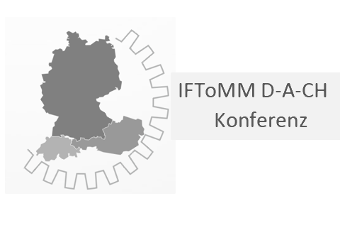Auswahlverfahren für geeignete Deckensysteme zur Automatisierung der Rohbauerstellung
In einem vom Ministerium für Heimat, Kommunales, Bau und Digitalisierung des Landes Nordrhein-Westfalen geförderten Projekt soll die Digitalisierung in der Bauwirtschaft vorangetrieben werden. Das Ziel ist es, wesentliche Teile des Rohbaus auf Basis eines digitalen Gebäudemodells automatisch mit parallelen Seilrobotern zu errichten. Nach der Realisierung der automatisierten Mauerwerkserrichtung soll die automatische Erstellung von Decken entwickelt werden. In diesem Beitrag wird der Auswahlprozess von Deckensystemen für die automatisierte Deckenerstellung beschrieben. Das Verfahren basiert auf drei im Detaillierungsgrad zunehmenden Bewertungsdurchläufen verschiedener Deckensysteme. Der erste Durchlauf ist eine Vorauswahl von Deckensystemen, die sich auf die Machbarkeit der Automatisierung und die Traglast des vorhandenen Seilroboters konzentriert. Der zweite Durchlauf umfasst eine detailliertere Analyse, die sich auf Wirtschaftlichkeitsmodelle, Errichtungszeiten, erwartete Akzeptanz, Anwendbarkeitsspektrum sowie Lager- und Logistikbedingungen bezieht. Im letzten Durchlauf soll das Legen der ausgewählten Deckensysteme mit einem bestehenden Seilroboter validiert werden, was zum Zeitpunkt dieser Veröffentlichung noch aussteht.
In a project funded by the Ministry for Regional Identity, Local Government, Building and Digitalization of the Land of North Rhine-Westphalia, digitalization in the construction industry is to be advanced. The aim is to automatically build significant parts of the shell using parallel cable robots on the basis of a digital building model. After the realization of the automated masonry erection, the automatic creation of ceilings is to be developed. This paper describes the selection process of ceiling systems for automated ceiling production. The process is based on three evaluation runs of different floor systems with increasing levels of detail. The first run is a pre-selection of ceiling systems focusing on the feasibility of automation and the payload of the existing cable robot. The second run includes a more detailed analysis related to economic models, deployment times, expected acceptance, applicability spectrum, and storage and logistics conditions. The final run will validate the laying of the selected ceiling systems with an existing cable robot, which is still pending at the time of this publication.
Vorschau

IFToMM D-A-CH Konferenz
Zitieren
Zitierform:
Jeziorek, Christoph et al. (2023): Auswahlverfahren für geeignete Deckensysteme zur Automatisierung der Rohbauerstellung. In: Neunte IFToMM D-A-CH Konferenz 2023: 16./17. März 2023, Universität Basel. Online unter: https://nbn-resolving.org/urn:nbn:de:hbz:465-20230314-165911-9.
Zitierform konnte nicht geladen werden.
Rechte
Nutzung und Vervielfältigung:
Dieses Werk kann unter einer Creative Commons Namensnennung - Nicht kommerziell - Keine Bearbeitungen 4.0 Lizenz (CC BY-NC-ND 4.0)
Creative Commons Namensnennung - Nicht kommerziell - Keine Bearbeitungen 4.0 Lizenz (CC BY-NC-ND 4.0)
genutzt werden.
